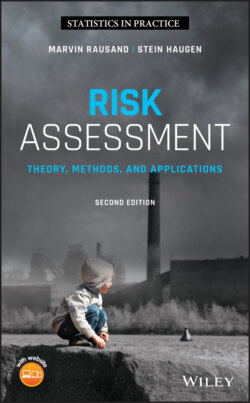Читать книгу Risk Assessment - Marvin Rausand - Страница 223
4.4.2.1 The Newtonian–Cartesian Paradigm
ОглавлениеA paradigm is a world view underlying the theories and methods of any scientific subject. For traditional sciences, the Newtonian–Cartesian paradigm has been, and still is, the most essential and all the systems discussed in this book are rooted in this paradigm. The basis for this paradigm was made by the French philosopher Réne Déscartes (1596–1650) and the English scientist Sir Isaac Newton (1642–1726). The main building blocks of the Newtonian–Cartesian paradigm are:
Déscartes' theory on reductionism, which says that all systems (and problems) can be fully understood by decomposing the system into its constituent elements and by separately studying each element (see Figure 4.1).
Newton's three laws of forces and motion, his theories on universal gravitation, and the unifying theory known as Newtonian mechanics.
Déscartes's fundamental division between mind and matter, implying that mental processes do not interfere with the physical world, and vice versa. He considered the physical world as a machine, where its behavior is governed by the laws of mechanics, which in the paradigm are Newton's laws.
The assumption of a universal time that “flows” as a constant and unchangeable process, and is the same for everyone.
The assumption of a constant and universal space. Déscartes developed the Cartesian coordinate system such that the location and movement of an element in the space can be uniquely specified.
The space between physical objects can be considered as empty.
The Newtonian–Cartesian paradigm is mechanistic and sees the world as a set of isolated items that interact in a linear, cause and effect way. The Newtonian–Cartesian paradigm has had an enormous success and most of our current knowledge about physical systems (from atoms to the outer space) are based on this paradigm. The Newtonian–Cartesian paradigm may be summed up by the metaphor:
The whole is no more or no less than the sum of the parts.
For a long time, the Newtonian–Cartesian paradigm was considered to be of totally general applicability, but more recent insights have shown that this is not the case. The first stumbling block for the paradigm was the development and acceptance of quantum mechanics and its probabilistic focus. The second and more definitive stumbling block was Albert Einstein's general theory of relativity where it was shown that time and space are dependent on gravitation fields and velocity. A high number of detailed experiments have proved the correctness of Einstein's theories.
Almost all our education has been based on the Newtonian–Cartesian paradigm and all assumptions and rules therefore seem obvious. Most of us struggle to imagine that they are not totally general.
